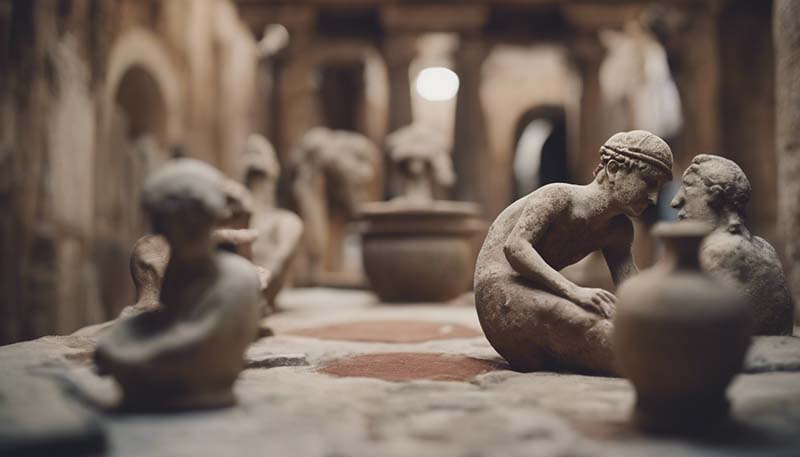The Etruscans: The Mysterious Ancient Culture of Italy
The Etruscans were an ancient civilization that inhabited the region of Etruria, in what is now modern-day Italy, from approximately the 8th century BC to the 1st century BC. Their culture is a fascinating blend of indigenous elements and influences from the eastern Mediterranean, particularly from Greece and the Near East. Despite their significant influence on Roman culture and their own considerable achievements, the Etruscans remain somewhat mysterious due to the scarcity of written records and the passage of time.
Origins and Early History
The origins of the Etruscans are still a subject of debate among historians and archaeologists. Some theories suggest that they were a native Italian population, while others propose that they were immigrants from the eastern Mediterranean. The latter theory is supported by the fact that many aspects of Etruscan culture, such as their language, art, and religious practices, show strong similarities to those of ancient Anatolia (modern Turkey).
Advertisement
Language and Writing
The Etruscans had their own unique language, which is still not fully understood by scholars. They used a script derived from the Greek alphabet to write their language, but the texts that have survived are few and often fragmentary. This has made it difficult to reconstruct the details of their history and culture.
Society and Politics
Etruscan society was highly organized and urbanized. They built several city-states, the most famous of which were Tarquinia, Cerveteri, and Vulci. Each city-state was an independent entity with its own government, ruled by a king or a group of nobles. Over time, these city-states formed a loose confederation known as the Etruscan League, which allowed for cooperation in times of war and diplomacy.
Religion and Mythology
Religion played a central role in Etruscan life. They worshipped a pantheon of gods and goddesses, many of whom were similar to those of the Greeks. The Etruscans were particularly known for their divination practices, which included interpreting the flight of birds and examining the entrails of sacrificed animals to predict the future. They also believed in an afterlife and built elaborate tombs to house the remains of their dead.
Art and Architecture
Etruscan art and architecture were highly influential in the ancient world and had a significant impact on the development of Roman art and culture. They were skilled metalworkers and produced exquisite objects in bronze and gold. Etruscan pottery was also highly regarded and often featured intricate painted scenes and designs.

Tombs and Necropolis
One of the most striking aspects of Etruscan culture is their elaborate tombs, which are often adorned with wall paintings and sculptures. The most famous of these are the Banditaccia Necropolis at Cerveteri and the Necropolis of the Monterozzi at Tarquinia. These tombs provide valuable insights into Etruscan daily life, beliefs, and artistic styles.
Decline and Legacy
The Etruscan civilization began to decline in the 5th century BC due to a combination of factors, including internal strife, external threats from the Gauls and Greeks, and the growing power of Rome. By the 1st century BC, the Etruscan city-states were incorporated into the Roman Republic, and their distinct culture gradually merged with that of the Romans.
Despite their decline, the Etruscans left a lasting legacy on the development of Roman and, by extension, Western art, architecture, and culture. Their influence can be seen in the design of Roman temples, the art of metalworking, and the practice of divination, among other things.
References
For further reading, please refer to the following sources:
- A comprehensive study on Etruscan culture and history.
- A detailed analysis of Etruscan language and writing.
- An examination of Etruscan society, politics, and religion.
- A survey of Etruscan art, architecture, and their influence on Roman culture.
Comments